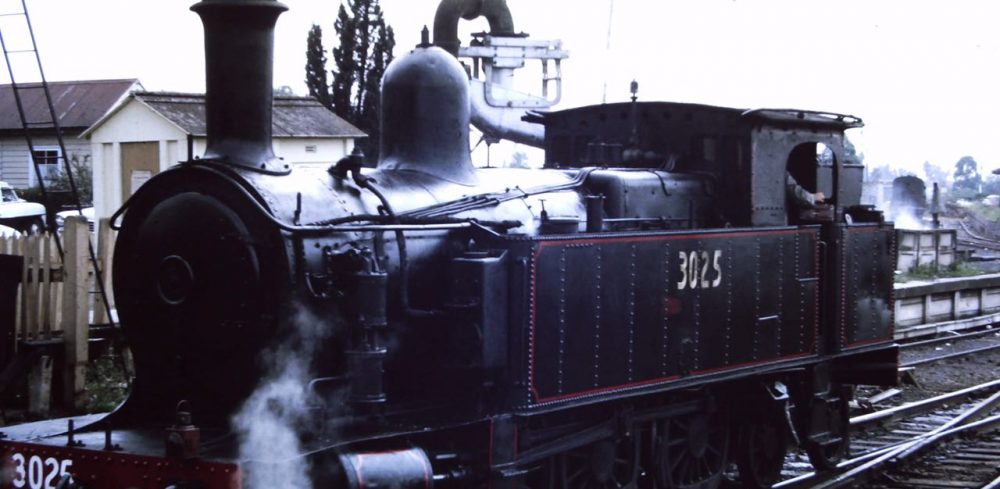I’ve always been somewhat of a tinkerer – I’m also somewhat of a train enthusiast – I shy away from the term gunzel – as I’d rather drive the things than photograph them.
I’ve also always had an interest in simulators and have often been impressed by the activities of the Simpit community – and to further top it off I’m an Engineer by profession.
So why not combine all three interests and build a full-sized train simulator using real parts?
Back in 1992 I was on the last “Red Rattler” tour, organised by the Sydney Electric Train Society (SETS) – of which I was a member at the time. It was during this tour that a discussion took place about obtaining cab parts and using them as controllers for model trains.

C3200 - on the last single deck tour of Jan 1992
After this I got in contact with the then SRA of NSW Electric Car Depot (ELCAR) at Chullora – who were happy to supply me with a Master Controller, Brake Controller, some gauges and some other bits and pieces.
During the scrapping of these carriages, I went out to Eveleigh depot and managed to purchase another brake stand, including all the piping from the scrappy as my Elcar one was missing a number of parts.
As this was long before simulators at home were feasible, I didn’t think to purchase an entire cab – much to my regret later on. However, I was given a break when in 2004 I was lucky enough to be able to purchase the remaining cab parts from C7487 which was then at Revolve in Belconnen, Canberra, shortly before the site closed and the carriage was moved. (I believe it went up the North Coast somewhere – I’d be interested to hear if anyone can pinpoint its location)
Removing all the controls wasn’t easy, especially since there was no power to that part of the site – so all of the work had to be done with hand tools. However, I did manage to get most of the equipment out.
This was also long before I had a decent digital camera – so apologies for the poor quality of these photos.

C7487 - amp gauge and circuit breakers

C7487 - Brake Stand and Master Controller

C7487 - Switch Panel

C7487 - brake stand and horn control

C7487 - Brake stand removed

C7487 - Master Controller Removed
With this – and the purchase of one more master controller on eBay – I finally had a complete cab of a Sydney Red Rattler!

















